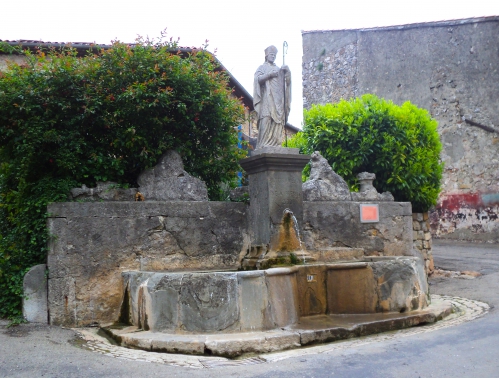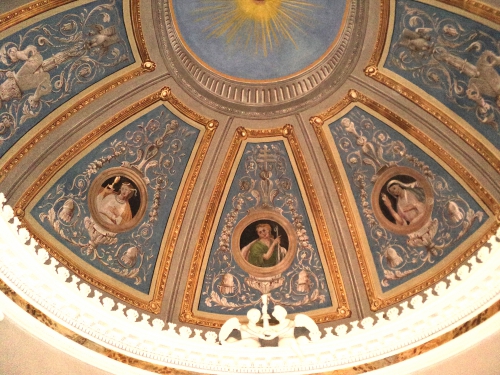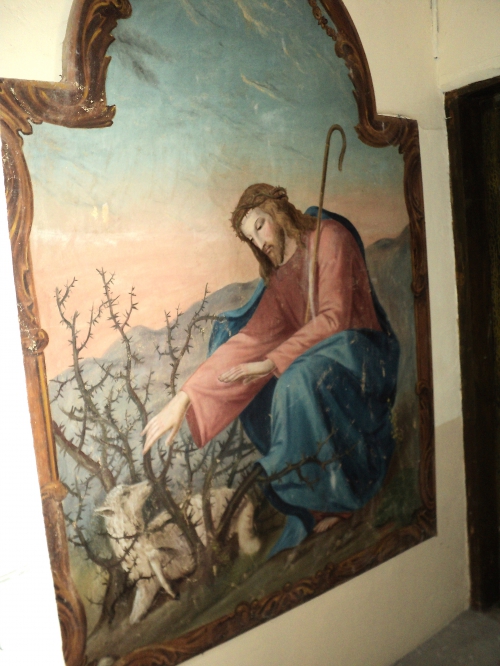Brenac
Brenac is between Quillan and Nebias and covers a wide area of five hamlets where only 204 people live in total. The valley of Bréziljou was inhabited in protohistoric times. The people lived in caves at St. Quirgue. The village began in Gallo-Roman times as the home of Brennus. A God or a man? I don't know.
In the 11th century the castle was built, it was owned by Olivier de Termes, who negotiated the surrender of Queribus in Cathar times, then it passed into the hands of the Aniort family. Religious wars came again in the 16th century.
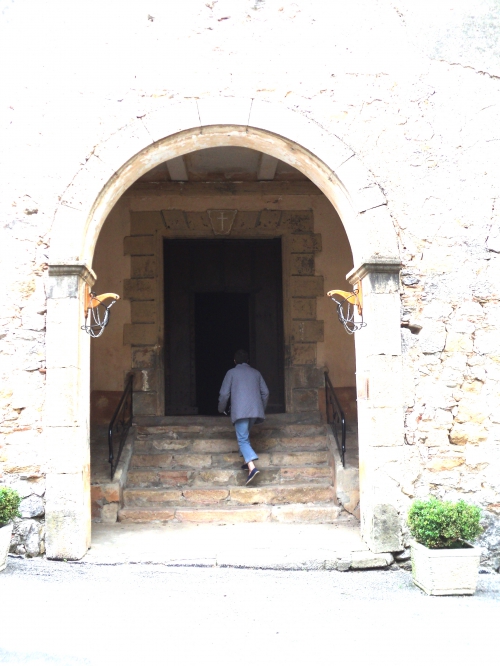
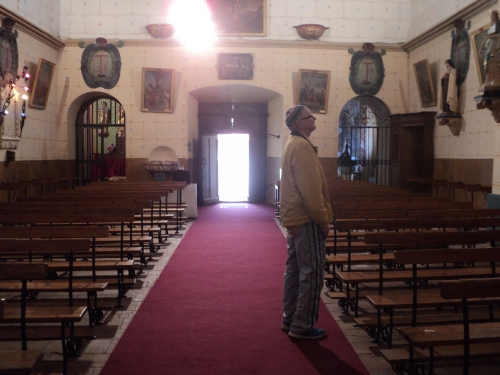
Doors within doors, outside and inside.
Just after the Revolution in 1809 the bishop of Carcassonne was concerned at the state of Brenac church, the roof timers were rotting, the walls were crumbling and the clock tower had no bells. Restoration began in 1837 and in 1843 the roof frescoes were painted supposedly showing the three Mary's of Salomé, Virgin and Magdalene. In April 1987 the church was designated a "monument historique."
It is dedicated to Saint Julien and Sainte Basilisse, saints popular in the foothills of the Pyrenees, husband and wife preachers who remained virgins and were eventually martyred at Antioche in the early 4th century. It was restored in the 1850's by abbé Courtade, yes, he who was a friend of Bérenger Saunière. While Bérenger was at Rennes-le-Château he gave Courtade a decorated cup he had found when renovating his own church; there was more than thirty years between the two priests. Why the gift? In those days of the church nearly all the village priests were renovating their churches, maybe the two had a mutual interest in restoration. Courtade was a sculptor and the statue of Pierre Amiel, by the "fontaine" or natural spring in the village, was made by him. He also renovated the tiny chapelle in the village to Saint Anthony the Hermit, first built in 1646, says the official history. But apparently it was first constructed as an oratoire (wayside halt to pray) in the time of the Visigoths, on a high part of the village with a view directly towards Rennes-le-Château, which of course was founded by the Visigoths.
Other things in the church interested me, there are many statues and side chapels. Below this picture of three saints that look like Joseph, Mary with Jesus and Sainte Germaine, there is a body of Jesus; with his eyes half-open.
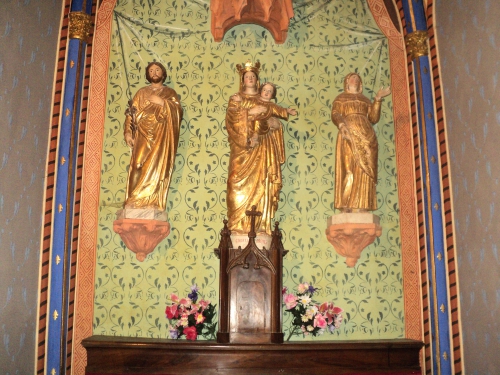
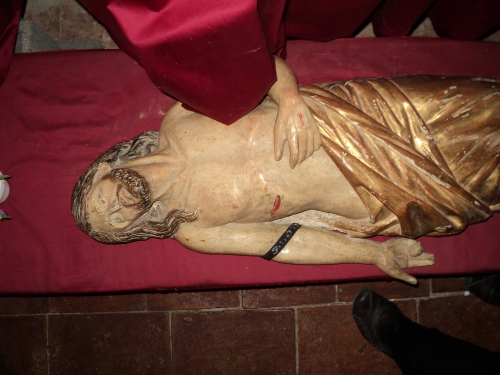
The Baptistry was magnificent, as was the "Chapelle Miraculeuse."
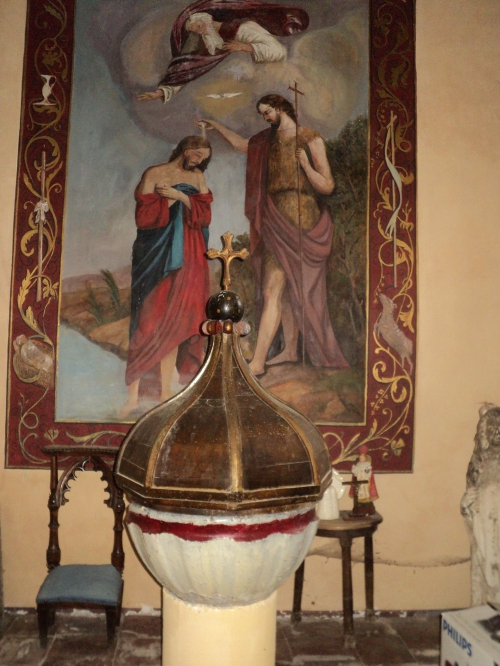
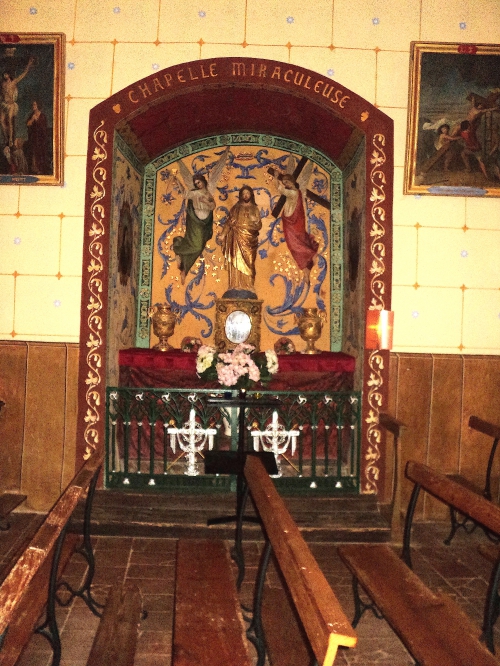
I was only able to make a brief visit to Brenac and am left with the feeling there is much more to discover. . . . . I would like to see the Visigothic chapel there . . . meanwhile, here is Jesus as the Good Shepherd.
Inscrivez-vous au blog
Soyez prévenu par email des prochaines mises à jour
Rejoignez les 97 autres membres

